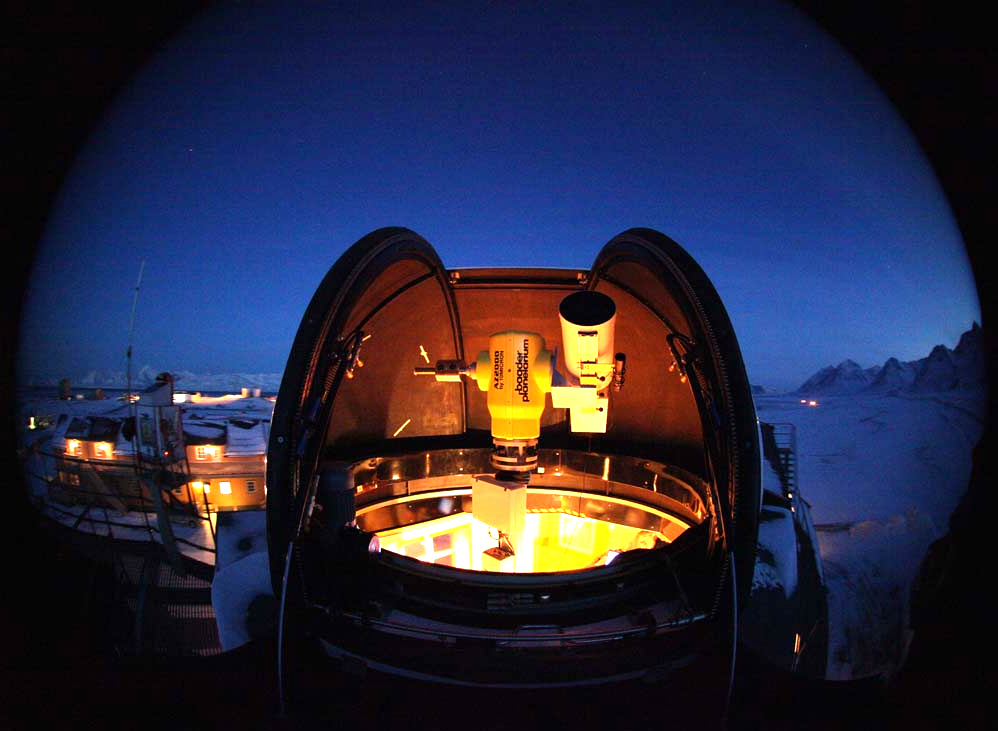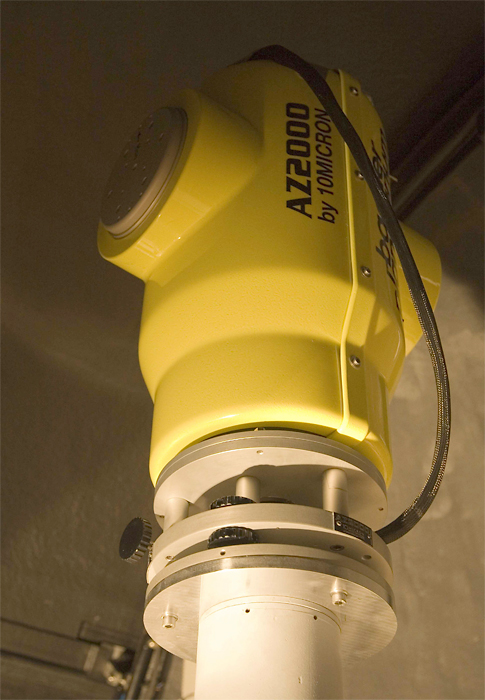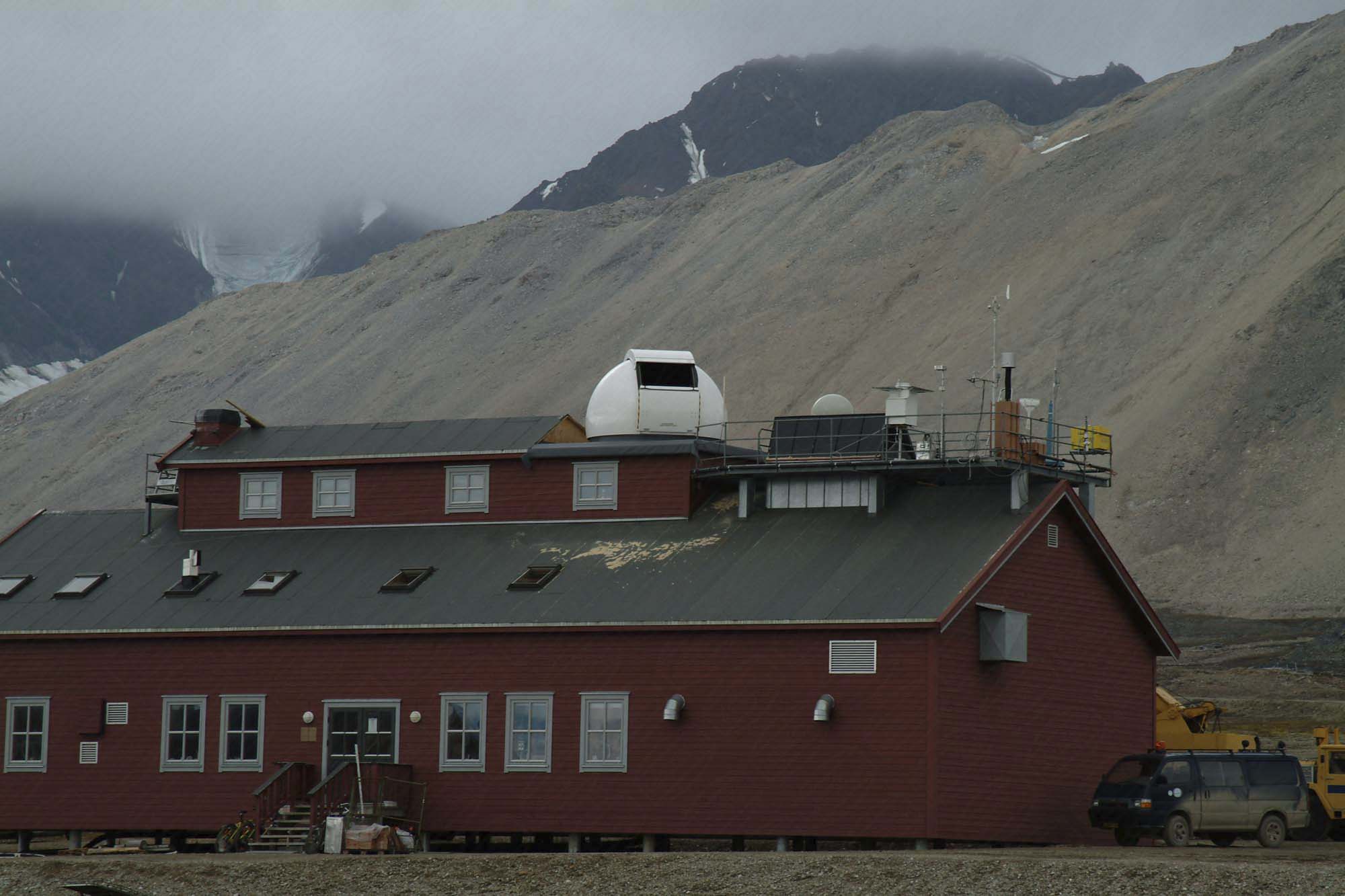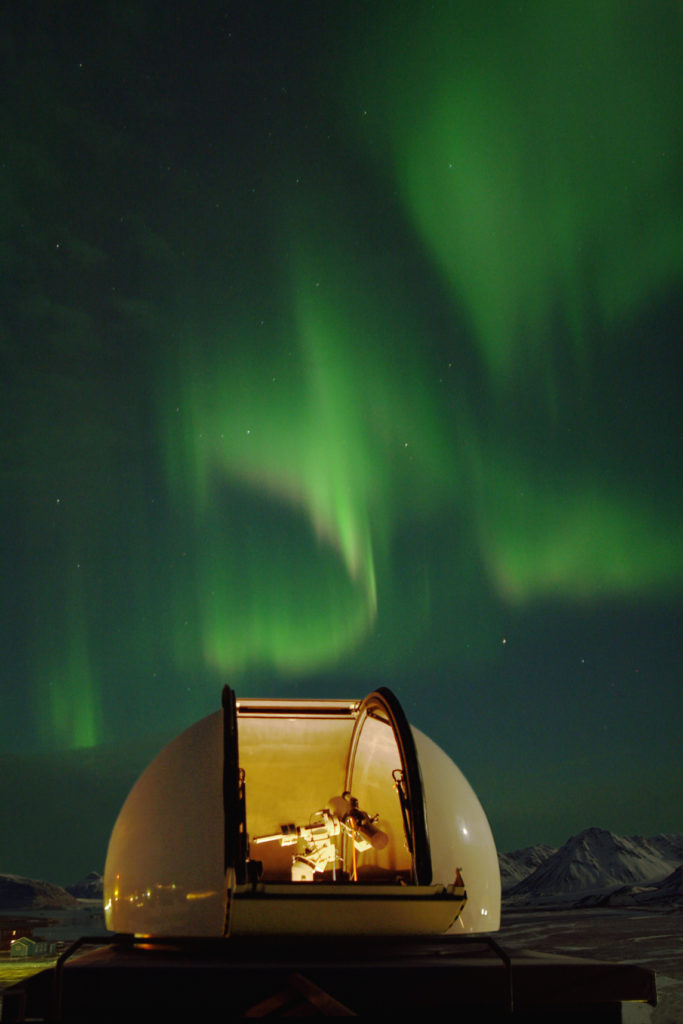
NyAlesund is the most northerly, permanently populated place on earth. From this point almost all European expeditions set out to conquer the North Pole. During the polar winter the route leads over the pack ice - from here almost 1000 km (as the crow flies) - to the geographical pole.
Both the geography and the weather conditions are unique. Two domes of competitors did not work at this place and had to be removed in favour of this construction. The main picture on the left shows the 3.2 meter Baader observation dome of the Koldewey Station for Atmospheric Research in NyAlesund in Svalbard, November 2003 - only a few days after one of the largest solar flares ever measured.
Dome equipment:
fully automated, internet compatible with own software, 3 mtr. diameter gear rim (in "ice-breaking" design), absolute encoder, telescope-coupled dome rotation, weather-resistant sensors, hermetic, low-temperature-resistant seals, double-shell (sandwich) construction with PU insulation, de-icing system.
Instruments:
Zeiss-Meniskas 180 with automatic star photometer and ST-4 CCD camera on Astro-Physics 900 mount in low temperature version (note the pole height of the hour axis at 80° North).
Instrument-upgrade in November 2010
Starphotometer measurement campaign with high-speed photometer mounted on azimutal precision-mount AZ2000 (predecessor of the current 10Micron AZ 2000) inside Baader Planetarium 3,2M low-temperature observation dome.
In contrast to the common Sunphotometer measurements these Aerosol-measurements can be made only during the polar night. These video-sequences were made mainly in the last blue midday-hours of the beginning polar night. The auroras were taken from the same location.
The AZ2000 was produced in the special “Antarctica” version, which is able to work at extreme low temperatures of -84°C (-119F). Special mechanical and electronic considerations were necessary in order to design and produce this peculiar mount: from the correct choice of material and sizes to the use of special and very expensive lubricants, wiring and connectors. A special housing was also designed to protect against temperature and ice crystals formation and which needed different levels of seals depending on the effective operational temperature. This mount is the latest version of the AZ2000, an altazimuth mount based on the mechanics of the GM2000 HPS. The AZ2000 is a very versatile research mount, perfect for scientific activities such as satellite tracking, photometric and astrometric measurements, LiDaR laser applications and so on.










 Featured:
Featured: